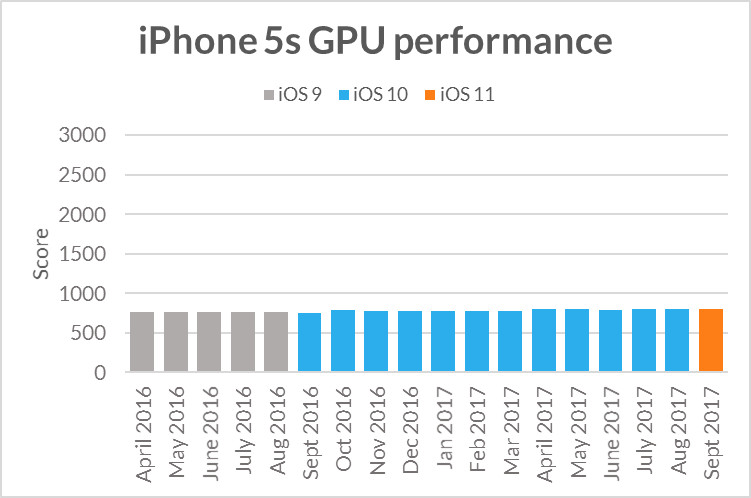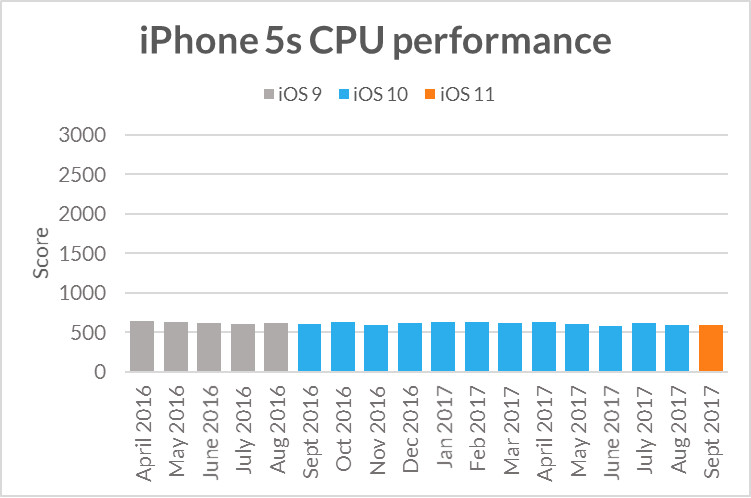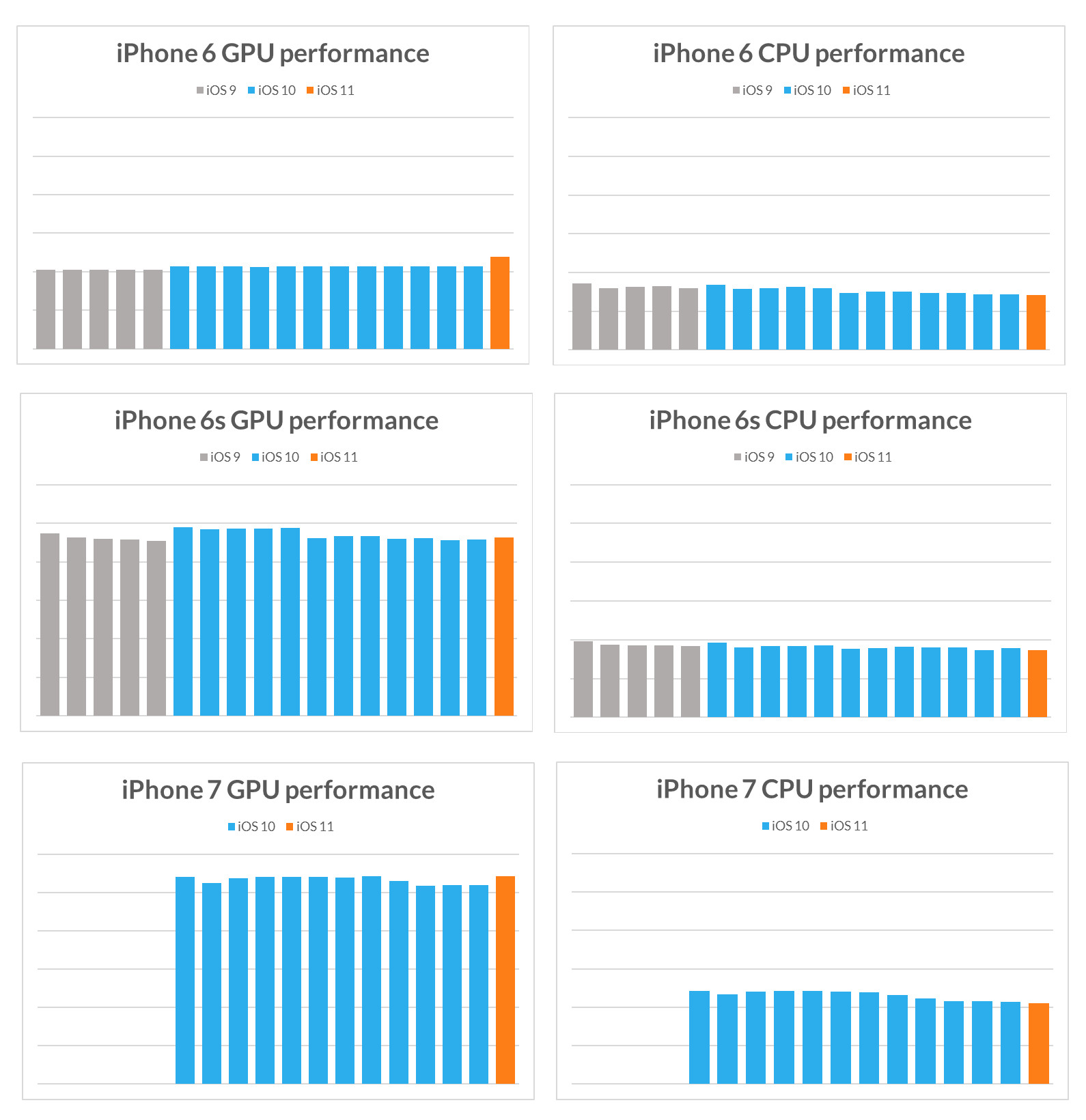Is it true that iPhones get slower over time?
October 6, 2017
Last week, a story went viral that claimed Apple was intentionally slowing down older iPhones to push people to buy its latest models.
The claim was based on data which shows Google searches for "iPhone slow" spiking dramatically with the release of each new model.
And while plenty of reputable sites debunked the logic of that claim, no one looked at actual performance data to tell the true story.
Fortunately, we have plenty of real-world data we can use. Since 2016, we have collected more than a hundred thousand benchmark results for seven different iPhone models across three different versions of iOS.
These benchmark results provide a unique insight into the everyday performance of each iPhone model over time. And, as you'll see, there are no signs of a conspiracy.
How we test iPhone performance
3DMark is a free benchmarking app for testing the performance of smartphones. It works by running a demanding series of tests. Each test produces a set of scores that you can use to compare devices. The recommended test for recent iPhone models is called Sling Shot Extreme.
Are older iPhones being deliberately slowed?
We looked at data for the iPhone 5s first because, if older devices are being deliberately slowed, the effect should be most obvious with models that have been around for longer.
The chart below shows iPhone 5s GPU performance over time. Each bar shows the average 3DMark Sling Shot Extreme Graphics test score calculated from all results submitted during that month. A higher score indicated better performance. The bars are coloured according to iOS version.
As you can see, iPhone 5s GPU performance has remained consistent from iOS 9 to iOS 11 with only minor variations that fall well within normal levels.
The next chart below shows CPU performance over time as measured by the 3DMark Sling Shot Extreme Physics test. Again, it is clear that iOS updates have not had a significant effect on performance.
The charts for the iPhone 6, iPhone 6s, and iPhone 7 tell a similar story. GPU performance has remained consistent across iOS versions with only minor variations.
The graphs for CPU performance show a very slight drop in performance over time - possibly due to minor iOS updates or other factors - but a user would be unlikely to notice this small difference in everyday use.
Why do searches for "iPhone slow" spike when new models are released?
Our benchmarking data shows that, rather than intentionally degrading the performance of older models, Apple actually does a good job of supporting its older devices with regular updates that maintain a consistent level of performance across iOS versions.
That said, there are some factors that might affect people's perception of performance after updating an older device with a newer version of iOS. An update might add new features that use more resources or require more processing power. New apps developed for the latest models might not run as smoothly on older devices. Conversely, apps designed for an earlier version of iOS might not take full advantage of optimizations in the latest version. And then there is always the psychological effect of knowing that there is a new and improved model available, which can make your own device seem outdated.
How to test your own Android or Apple phone
3DMark is a free benchmarking app available from the Apple App Store and Google Play. Benchmark your phone and see how it compares with the latest models.
Recent news
-
Procyon Labs launches with FLUX.1 AI Image Generation Demo
November 4, 2025
-
3DMark Solar Bay Extreme is available now!
August 20, 2025
-
3DMark Speed Way Teams up with PC Building Simulator 2!
July 17, 2025
-
New Procyon AI Benchmark for Macs now available
June 25, 2025
-
3DMark for macOS available now!
June 12, 2025
-
New Inference Engines now available in Procyon
May 1, 2025
-
Try out NVIDIA DLSS 4 in 3DMark
January 30, 2025
-
Test LLM performance with the Procyon AI Text Generation Benchmark
December 9, 2024
-
New DirectStorage test available in 3DMark
December 4, 2024
-
New Opacity Micromap test now in 3DMark for Android
October 9, 2024
-
NPUs now supported by Procyon AI Image Generation
September 6, 2024
-
Test the latest version of Intel XeSS in 3DMark
September 3, 2024
-
Introducing the Procyon Battery Consumption Benchmark
June 6, 2024
-
3DMark Steel Nomad is out now!
May 21, 2024
-
Procyon AI Inference now available on macOS
April 8, 2024


